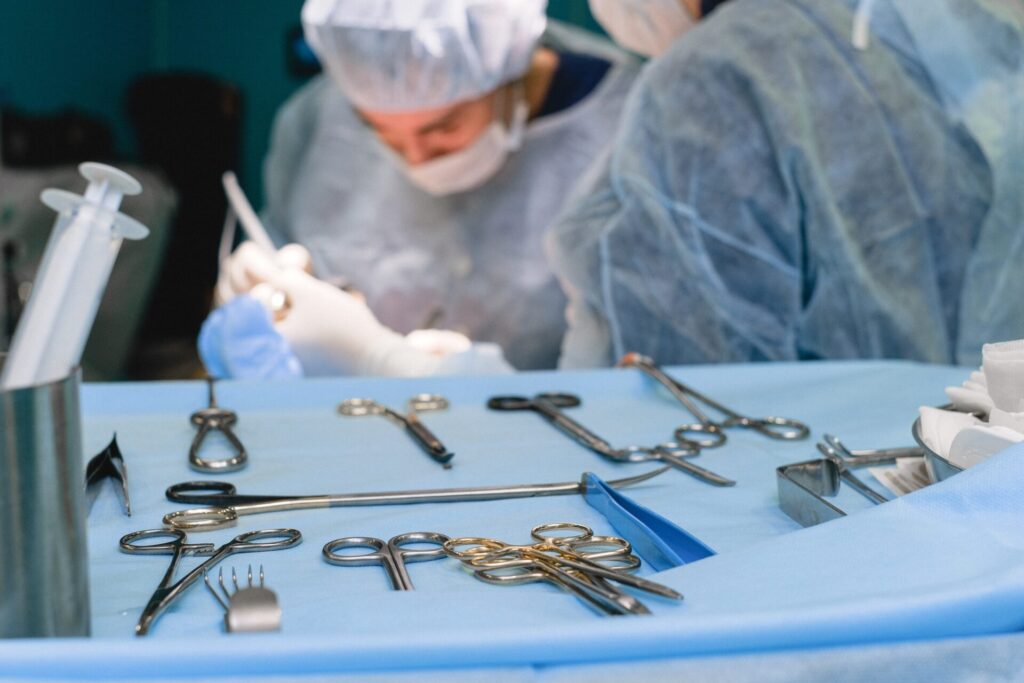How Physical Therapy Helps After Lateral Ankle Ligament Reconstruction
Are you looking for relief from the pain and discomfort associated with recovering from lateral ankle ligament reconstruction? Physical therapy can provide significant healing benefits and open up many new possibilities. It is an essential part of post-operative care which works to reduce pain, improve mobility, increase strength, restore flexibility, and help you regain your independence. In this blog post, we’ll explore how physical therapy helps after lateral ankle ligament reconstruction through several proven techniques and exercises that are designed to progress your recovery safely and effectively. Read on to learn more!
Overview of Lateral Ankle Ligament Reconstruction and How Physical Therapy Can Help
Lateral ankle ligament reconstruction is a surgical procedure that is used to repair damaged ligaments on the outside of the ankle. This type of injury is quite common among athletes, as well as the general population. The procedure involves creating incisions near the ankle and repairing or replacing the damaged ligaments. While the surgery itself is important for the recovery process, physical therapy is also critical for long-term rehabilitation and to help restore normal ankle function. Physical therapy can include exercises to improve ankle strength and flexibility, as well as techniques to reduce swelling and pain. With the right approach and guidance, physical therapy can help patients regain strength and mobility to get back on their feet and resume their active lifestyles.
Understanding the Injury, Anatomy, and Mechanics of the Ankle Joint
The ankle joint is a complex structure consisting of bones, ligaments, tendons, and muscles that work together to provide stability and mobility to the foot. Understanding its anatomy and mechanics is crucial in preventing and treating ankle injuries. Ankle sprains, strains, and fractures are common injuries that can occur due to sudden twists, impacts, or overuse. The severity of an ankle injury may vary depending on several factors, such as the type of tissue involved, the location of the injury, and the extent of damage. Proper diagnosis, treatment, and rehabilitation are essential to ensure complete recovery and prevent future injuries. By gaining a deeper understanding of the ankle joint’s anatomy and mechanics, individuals can take necessary precautions and make informed decisions to maintain their foot health.
The Benefits of Physical Therapy Post-Surgery to Reduce Pain and Swelling
Undergoing surgery can be a daunting experience but it’s important to remember that the road to recovery doesn’t end once you leave the operating room. Physical therapy can play a crucial role in your rehabilitation process by helping to manage any post-surgery pain and swelling you may be experiencing. Through targeted exercises and hands-on techniques, physical therapists can assist in improving your range of motion, reducing inflammation, and promoting faster healing. With a personalized plan tailored to your specific needs, physical therapy can help you regain strength, mobility, and independence, allowing you to get back to your normal daily activities sooner rather than later. So why not take advantage of the benefits of physical therapy post-surgery and get on the path to a full and speedy recovery?
Restoring Range of Motion in the Ankle Joint with Physical Therapy Exercises
The ankle joint is one of the most critical joints in the body, and any limitations in its range of motion can significantly impact one’s quality of life. Fortunately, physical therapy exercises can help restore the ankle joint’s range of motion, improving mobility and reducing pain. Physical therapists may recommend exercises such as ankle circles, ankle pumps, and heel slides, depending on the individual’s specific needs and condition. These exercises not only work to stretch the ankle joint but also strengthen the muscles and ligaments surrounding it. With consistent effort and dedication to your physical therapy regimen, you can regain the flexibility and mobility you need to move comfortably and confidently.
Strengthening the Ankle Joint to Prevent Reinjury with Balance and Stability Training
Ankles are often the unsung heroes of our body, as we rely on them to support our weight and enable movement. But when an ankle is injured, it can have a significant impact on our daily activities. That’s why it’s crucial to prevent re-injury by strengthening the ankle joint through balance and stability training. These exercises focus on helping the ankle regain its coordination and strength, while also improving overall balance. By incorporating these types of exercises into your routine, you can take a proactive approach to preventing future ankle injuries and keep yourself moving freely. So, take the time now to invest in your ankle health, and you’ll be better prepared to tackle any challenges that come your way.
Tips on Maintaining a Healthy Lifestyle to Support Recovery from Surgery
Going through any surgery can be a trying time, but there are steps you can take to help your body recover as quickly and smoothly as possible. Maintaining a healthy lifestyle is crucial during this time, as it can support your body’s natural healing processes and strengthen your immune system. Some tips that can help you achieve this include eating a nutritious and balanced diet, engaging in daily exercise that is appropriate for your body’s needs, staying properly hydrated, managing your stress levels, and avoiding habits such as smoking and excessive alcohol intake that can hinder your body’s recovery. By incorporating these healthy habits into your post-surgery routine, you may be able to speed up your recovery time and feel better in no time.
Conclusion
To sum up, lateral ankle ligament reconstruction requires a combination of surgery and physical therapy to achieve full recovery. During the rehabilitating process, understanding the injury, doing a range of motion and muscle strengthening exercises, as well as maintaining proper balance and stability, are essential to reduce pain and swelling and optimize healing. If you or someone you know has had lateral ankle ligament reconstruction, physical therapy can help restore function while protecting from reinjury. And lastly, keeping a healthy lifestyle with adequate rest and nutrition can support joint health while aiding injury recovery post-surgery.

